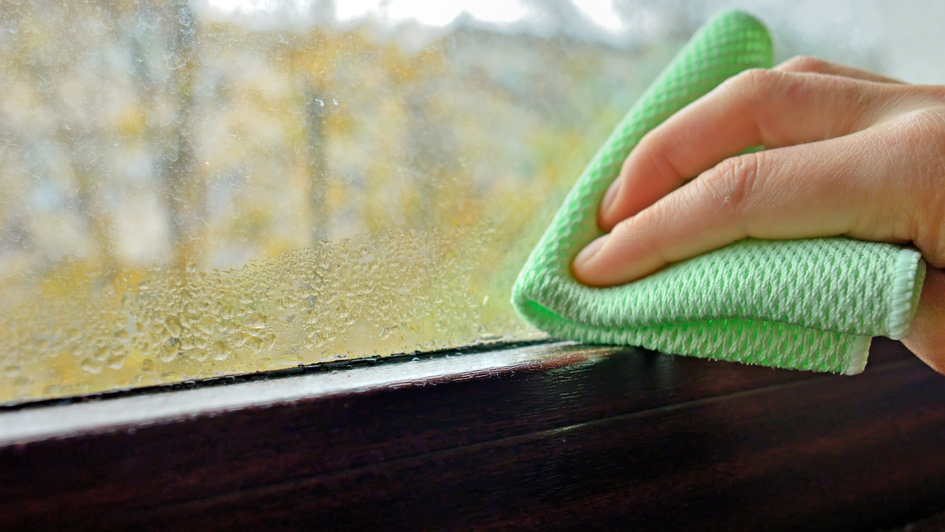
The windows throughout your home are a gateway to the outdoors, a way to let light in when you enjoy the view of your garden, yard or other surroundings. The last thing you want to see is a sweaty window covered in a film of condensation.
Not only are windows coated in condensation unappealing, they also can be a sign of a larger air-quality deficit throughout your home. Thankfully, there’s several things you can do to resolve the problem.
What Produces Sweating in Windows
Condensation on the interior of windows is formed by the moist warm air throughout your home hitting the colder surface of your windows. It’s particularly commonplace in the winter when it’s much colder outside than it is inside your home.
Inside Moisture vs. In Between Panes
When discussing condensation, it’s important to know the difference between moisture on the inside of your windows in comparison to moisture in between the windowpanes. One is an air-quality issue and the other is a window issue.
- Moisture within a window is created from the warm humid air in your home forming on the glass.
- The moisture you notice between windowpanes is formed when the window seal stops working and moisture gets in between the two panes of glass, and by then the window needs to be repaired or replaced.
- Condensation on the inside of the windows isn’t a window problem and can instead be resolved by adjusting the humidity across your home. Many things cause humidity in a home, like showers, cooking, laundry or even breathing.
Why Indoor Sweating on Windows Could Mean an Issue
Even though you might think condensation on the inside of your windows is a cosmetic issue, it can be a sign your home has high humidity. If this is in fact the case, water could also be collecting on window frames, cold walls or other surfaces. Even a slim film of water can help wood surfaces to mildew or rot over time, fostering the growth of mildew or mold.
How to Reduce Humidity in Your Home
Thankfully there are several options for eliminating moisture from the air in your home.
If you have a humidifier operating in your home – whether it be a small-scale unit or a whole-house humidifier – lower it further so the humidity inside your home decreases.
If you don’t have a humidifier active and your home’s humidity level is high, think about installing a dehumidifier. While humidifiers introduces moisture inside your home so the air doesn’t become too dry, a dehumidifier draws excess moisture out of the air.
Compact, portable dehumidifiers can remove the water from one room. However, portable units require emptying water trays and usually service a somewhat limited area. A whole-house dehumidifier will remove moisture across your entire home.
Whole-house dehumidifier systems are managed by a humidistat, which permits you to establish a humidity level precisely like you would pick a temperature with your thermostat. The unit will start instantly when the humidity level exceeds the set level. These systems collaborate with your home’s HVAC system, so you will receive the best results if you contact skilled professionals for whole-house dehumidifier installation Crystal and Twin Cities.
Other Ways to Eliminate Condensation on Windows
- Exhaust fans. Putting in exhaust fans in humidity hotspots including the bathroom, laundry room or above the stove can help by pulling the warm, moist air from these rooms out of your home before it can raise the humidity level in your home.
- Ceiling fans. Spinning ceiling fans can also keep air circulating throughout the home so humid air doesn’t get caught up in one spot.
- Opening your window treatments. Throwing open the blinds or drapes can reduce condensation by stopping the humid air from being stuck against the windowpane.
By decreasing humidity inside your home and dispersing air throughout your home, you can take advantage of clear, moisture-free windows even during the winter.



